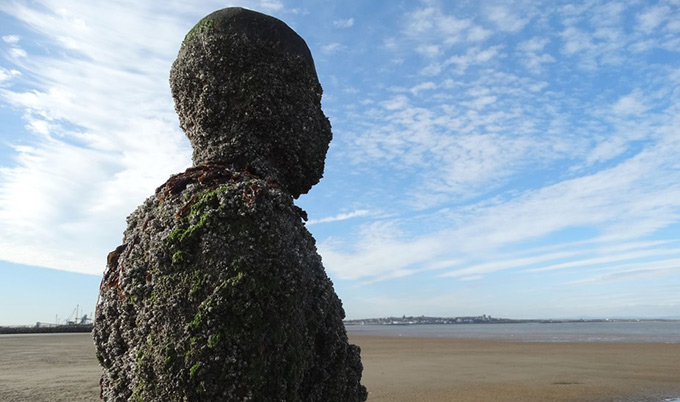Glues inspired by nature
Comment: Glues inspired by nature
Published on: 29 November 2016
Writing for The Conversation, Dr Nick Aldred discusses how glues inspired by nature will give us faster ships, surgical adhesives and sticky car tyres.

We use adhesives all the time, from the temporary stickiness of the humble Post-It note to super-strength glues used in construction, but it is easy to overlook the many living creatures that rely on adhesion for survival in the natural world.
Adhesion can be used to permanently attach to a surface, as climbing plants and barnacles do. It can help creatures get around, for example on the feet of geckos and various insects. Some creatures such as salamanders or sea cucumbers use glue as a defence against predators, while others such as spiders and velvet worms use it as a means of attack. Some even use adhesion during reproduction. But despite their frequent appearance in nature, most natural glues are poorly understood.

Nature, it seems, rarely does anything in the most straightforward of ways and adhesives are no different. Scientists must therefore be creative when trying to understand these amazing natural materials. For example, it’s not the fact that the Golden Gate Bridge is made out of steel and concrete that allows it to stand over San Francisco Bay – it is the engineering techniques that work with the properties of steel and concrete to carefully balance physical forces. In a similar way, simply knowing the chemical composition of natural adhesives is not enough.
The toe pads of geckos and byssus threads of marine mussels (their “beards”), for example, are formidably complex feats of engineering, of which the chemical composition is only one element.
When it comes to mussels, each byssus thread is injection moulded in place along the full length of the mussel’s foot, which temporarily connects the body of the mussel to the surface. Two types of collagen produce an elastic gradient between the hard rock and soft mussel tissue, which distributes the physical stresses of wave action or attack from predators. More than half a dozen specialised proteins and enzymes generate the thread’s sticky properties and form the permanent attachment to the surface. On top of that, the mussel can also choose where and when to attach.
To understand the adhesion process properly we need to understand the physics, the chemistry and the biology. It is what we call a multidisciplinary problem – in other words, it’s complicated. The challenge for bio-inspired technologies in general, and adhesives specifically, is to identify the important elements of the system and simplify them so that they can be translated, artificially recreated, and turned into products that we can all benefit from.
More uses for nature’s products
Why are biological glues so interesting to us? Because there are numerous technical applications where progress has been hampered by a lack of appropriate adhesives, and where natural adhesives have already solved the problems. Bioadhesives can do things that most synthetic glues cannot – joining surfaces underwater, for example. Human surgery is a clear application for such a glue.
One of the most common procedures during pregnancy is amniocentesis, used to test a foetus for Down syndrome. This carries a risk because it perforates the foetal membrane which cannot subsequently heal. Bio-inspired adhesives and sealants that can heal these perforations could help to significantly reduce instances of pre-term delivery. Based on natural molecules like proteins and carbohydrates, bio-inspired glues could also reduce the need for unpleasant chemicals such as formaldehyde to manufacture adhesives, reducing the environmental impact of the industry.
In other instances, knowledge of adhesion could help us to design non-stick surfaces – anti-fouling coatings for the hulls of ships that prevent creatures like barnacles from attaching, causing drag, slowing ships, using more fuel and increasing the emission of greenhouse gases. Or other materials that prevent bacterial biofilms, or slimes, from accumulating in food processing plants, on medical implants, environmental sensors or in your washing machine.
Wouldn’t it be nice to have streets free from chewing gum, clothes that resist the onslaught of messy children and windows that shed dust and dirt? All of these have potential solutions in nature. You don’t need to take my word for it: take a cabbage leaf (Savoy is best) and look how droplets of water roll off, collecting dirt as they go. This is the so-called lotus effect which works through a combination of the surface chemistry and texture of the leaves. A natural, self-cleaning material.
Adhesion is everywhere and the benefits of understanding it are clear. But it can be a challenge to link up the necessary expertise to tackle the biology, chemistry and physics of such complex systems in a coordinated way. This has led to the establishment of a four year-long, EU-funded European Network of Bioadhesion Expertise, which will help bring together researchers from across Europe to address the biological aspects of adhesion in nature, from frogs to fungi, as well as the fundamental physical and chemical processes that underpin it.
What will come of research into natural glues? It might be car tyres based on the toe pads of tree frogs that grip the road better in wet conditions, climbing robots based on geckos, or specialist adhesives for hi-tech applications. It was recently suggested by researchers that Spiderman’s powers of attachment are impossible. I, for one, remain hopeful.
Nick Aldred, SAgE Research Fellow, Newcastle University
This article was originally published on The Conversation. Read the original article.



